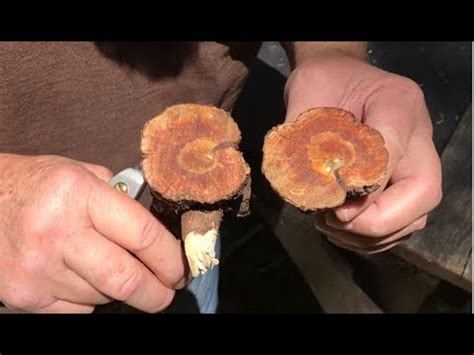How Long Does It Take For Fatwood To Form
Ronan Farrow
Apr 05, 2025 · 2 min read

Table of Contents
How Long Does it Take for Fatwood to Form?
Fatwood, that wonderfully resinous wood prized by fire starters and woodworkers alike, doesn't appear overnight. Its formation is a slow, natural process influenced by several factors. So, how long does it take? The answer isn't straightforward, but let's explore the timeline and contributing elements.
The Role of Resin and Time
The key to understanding fatwood's formation lies in resin. This sticky substance, produced by pine trees, acts as a protective mechanism, sealing wounds and defending against pests and diseases. Over time, resin accumulates in the heartwood, the older, central portion of the tree's trunk. This accumulation is gradual, occurring over many years.
Factors Affecting Fatwood Formation:
-
Tree Species: While many pine species produce resin, some are more prone to forming substantial fatwood deposits than others. Certain species are naturally more resinous.
-
Tree Age: Older trees generally contain more resin than younger ones. The longer a tree lives, the more time it has to accumulate this crucial component of fatwood. We're talking decades, even centuries in some cases.
-
Environmental Conditions: Stressful environmental factors, such as drought or insect infestations, can influence resin production. While not directly accelerating fatwood formation, these conditions might lead to increased resin production in an attempt by the tree to protect itself.
-
Tree Health: A healthy, vigorous tree will naturally produce more resin than a sickly one. The health and vitality of the tree directly impact its resin production and thus the eventual fatwood formation.
The Time Frame: A Range of Possibilities
There's no definitive answer to "how long?" It’s not like a cake baking in an oven with a precise timer. However, we can estimate:
-
Minimum: It likely takes at least several decades for a noticeable amount of resin to accumulate to form usable fatwood.
-
Maximum: In very old-growth trees, the process of resin accumulation could take centuries, resulting in exceptionally resin-rich fatwood.
Identifying Fatwood: More Than Just Resin
While resin is the key ingredient, the process involves more than just simple resin accumulation. The wood itself undergoes changes, becoming denser and more resistant to decay. It's the combination of high resin content and altered wood structure that creates the unique properties of fatwood.
Conclusion: A Natural, Slow Process
Fatwood formation is a slow, natural process resulting from years, even centuries, of resin accumulation within the heartwood of certain pine trees. The specific timeline is variable, influenced by factors such as tree species, age, environmental conditions, and overall tree health. So the next time you appreciate the readily burning power of fatwood, remember the long and fascinating journey it undertook to reach your hands.
Featured Posts
Also read the following articles
| Article Title | Date |
|---|---|
| How Long Does Filtered Water Last At Room Temperature | Apr 05, 2025 |
| How Long Do I Leave Tape On New Windshield | Apr 05, 2025 |
| How Long Do Mach E Batteries Last | Apr 05, 2025 |
| How Long Does It Take For Lemon Law Settlement | Apr 05, 2025 |
| How Long Does It Take To Cut Hair | Apr 05, 2025 |
Latest Posts
-
How Long To Cook Tripe In Pressure Cooker
Apr 06, 2025
-
How Long To Cook Tripe In A Pressure Cooker
Apr 06, 2025
-
How Long To Cook Steak On Infrared Grill
Apr 06, 2025
-
How Long To Cook St Louis Ribs At 250
Apr 06, 2025
-
How Long To Cook Shrimp On The Blackstone
Apr 06, 2025
Thank you for visiting our website which covers about How Long Does It Take For Fatwood To Form . We hope the information provided has been useful to you. Feel free to contact us if you have any questions or need further assistance. See you next time and don't miss to bookmark.
